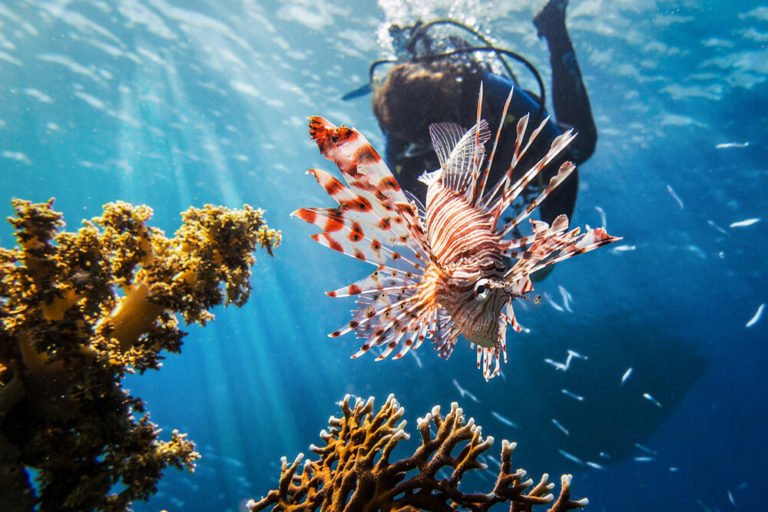6 Tips to Use Less Air on Your Next Dive

A lot of planning and excitement goes into every dive. So, you want to make sure you’re making the most out of it. (You’re not squeezing into that wetsuit for just anything.) After all, there’s nothing worse than realizing you’re running low on air just as you see something amazing.
To avoid ending a dive early, we’ll teach you how to minimize your air consumption.
STREAMLINE YOUR GEAR
Believe it or not, your gear could be causing you to consume more air. A poorly insulated wetsuit can leave you shivering, which requires more air to breathe. A loose-fitting BCD means you won’t be able to control your buoyancy (so you’ll exert more energy and breathe more heavily).
Anything hanging off or floating behind you will increase the effort needed to navigate the water. Your gear needs to be tight but obviously not to the point where you can’t breathe.
STOP THE LEAKS
Speaking of gear, double-check it for leaks. Even a minor stream of bubbles can mean big trouble later. Ask your buddy to swim behind you to make sure everything’s the way it should be.
FINE TUNE YOUR BUOYANCY AND TRIM
It’s important when diving to keep your body as straight as possible. Doing so helps you expend less energy and consume less air.
As for buoyancy, being neutral is key. If you’re not, it’ll be hard to switch fin strokes and hang effortlessly.
CONTROL YOUR MOVEMENT
Scuba diving isn’t about who can swim the fastest. It’s about taking your time and enjoying the adventure. When you take your time and go at a steady pace, you’ll use less air than if you’re frantically rushing to cover more ground. If you feel yourself getting out of breath, take a moment to pause then pick back up when you’re ready.
GET IN SHAPE
While diving isn’t a competitive sport, it does help when you’re in shape. Huffing and puffing underwater uses more air and can incite panic.
To better prepare yourself on your next dive, try yoga or running. These types of activities can increase your stamina and teach you to control your breathing.
ESTIMATE YOUR AIR CONSUMPTION
You don’t want to have to end your dive early because you’re low on air, so you can learn how to calculate your air consumption. To do this, you’ll want to determine your SAC (surface air consumption) rate.
Next time you enter the water, dive down to a smooth part of the ocean floor. Neutralize your buoyancy then record your time, depth, and your pressure reading. From there, swim at a steady pace for about ten minutes. After the time is up, record your pressure reading again.
To put all this information to good use, grab a calculator. Divide the total gas used by the number of minutes spent swimming. The result is your PSI per minute.
Next, divide the depth by 33 then add 1. The result is your atmospheres absolute of pressure (ATA).
To determine your SAC rate from here, divide the PSI by the ATA to determine your SAC rate.
ENJOY YOUR DIVE LONGER
Maximize your bottom time on your next dive by double checking your gear and being thoughtful with your movements.
